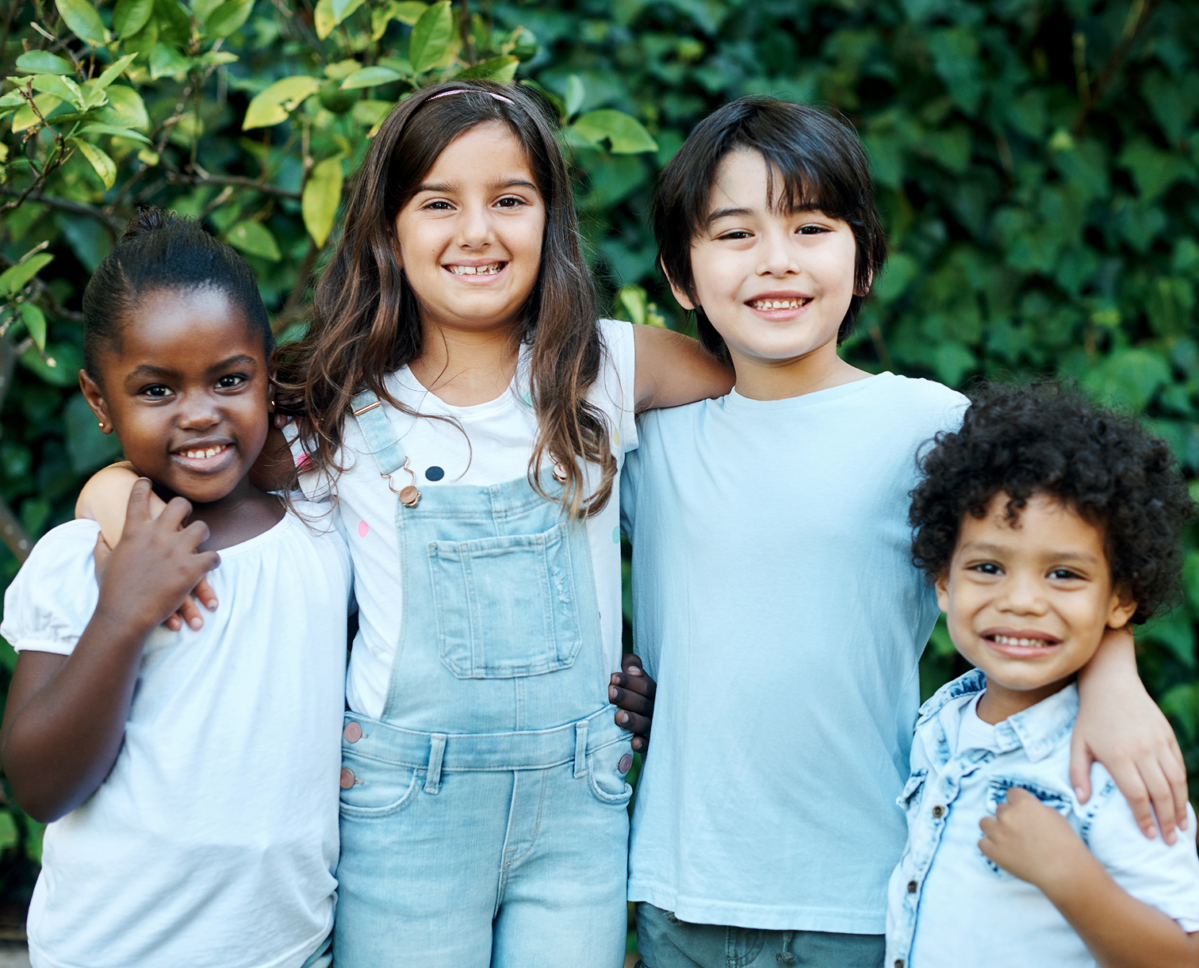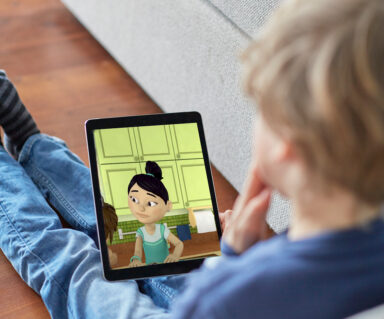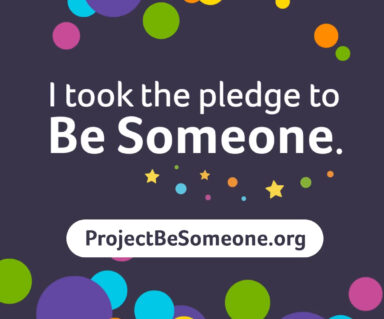You’re not alone.
We can do it together.
Help end the cycle of child abuse. Help children who can’t do it themselves. Help promote safety, positivity, and support of the Project Be Someone mission. Educate yourself and others in identifying the signs and how to also be a part of the solution.
Child abuse is often hidden. Only a fraction of child victims of maltreatment ever get support from health professionals.
Child abuse impacts everyone, in communities of all sizes and shapes. We reject the idea that it has to. Changing the narrative is not easy, but it begins with those dedicated to being part of the solution. By working together, we can end it once and for all.
It only takes 10 seconds… A report of child abuse is made EVERY 10 seconds. It’s not a lot of time, yet it can make all the difference. In 10 seconds…
- A toddler could be sent to daycare in frigid weather, wearing nothing more than shorts and sandals.
- A parent could act on a violent impulse that permanently alters the trajectory of their child’s life.
- A teenager could commit suicide because of the sexual abuse they’ve endured for years.

Together, we can stop child abuse.
Welfare authorities received more than 4 million referrals of child maltreatment in 2023.
More than 3 million of those referrals received an investigation or post-response services in 2023.
Child Advocacy Centers help more than 370,000 kids a year.
Signs of abuse
Don’t expect obvious signs when a child is being abused. Signs are often there, but you have to know what you’re looking for – signs can be physical, emotional or behavioral.
1.Signs of possible neglect
- Seem inadequately dressed for the weather (e.g., shorts and sandals in freezing temperatures)
- Appear excessively listless and tired (due to no routine or structure around bedtime)
- Report caring for younger siblings (when they themselves are underage or are developmentally not ready to do so)
- Demonstrate poor hygiene or smell of urine or feces
- Seem unusually small or thin or have a distended stomach (indicative of malnutrition)
- Have unattended medical or dental problems, such as infected sores or badly decayed/abscessed teeth
- Appear withdrawn
- Crave unusual amounts of attention, even in eliciting negative responses in order to obtain it
2.Signs of possible physical abuse
- Extensive bruises, especially in area of the body that are not normally vulnerable (e.g., behind ears)
- Bruises of different colors (which may indicate various stages of healing)
- Frequent bruises around the head or face, the abdomen or midway between the wrist and elbow
- Bruises in specific shapes, such as handprints, hanger marks, or belt buckles
- Marks that indicate hard blows from an object, such as an electrical cord or other whip-like object that makes a burn around the body
- Bruises on multiple parts of the body (which may indicate blows from different directions)
- Unexplained internal bleeding that might be observed as discoloration under the skin or blood filled lumps
- Extreme sensitivity to pain or complaints of soreness and stiffness or awkward movements as if caused by pain
- Adult-sized, human bite marks
- Burns, especially those that appear to be from objects such as cigarettes, irons, etc.
- Injuries for which the explanation given is inadequate
3.Signs of possible sexual abuse
- Bruising in the inner thigh or genital area
- Have difficulty walking or sitting
- Complaints of genital or anal itching, pain, or bleeding
- Frequently vomiting
- Becomes pregnant at a young age
- Have a sexually transmitted infection
- Exceptionally secretive
- Advanced sexual knowledge, more than what is age appropriate
- Extreme compliance of withdrawal
- Overly aggressive
- Inordinate fear of males or females
- Seductive behavior
- Sleep problems; nightmares
- Crying without provocation
- Sudden onsets of wetting or soiling in their pants or bed
- Suicidal ideation or gestures
- Frequently running away
- Cruelty to animals, especially pets
- Firesetting behaviors beyond curiosity
- Self-mutilation; cutting, burning, scratching themselves
4.Risk factors for maltreatment
- Born prematurely, low birth weight
- Perceived as unusual or different in terms of appearance or temperament
- Unhealthy, congenital abnormalities
- Has a physical/emotional/developmental disability
- Lives in poverty
- Drug or alcohol abuse
- Presence of crime/violence
- Single parent homes
- Parents with a lack of education
- Domestic violence
- Mental illness of the caregiver
5.Behavioral clues of child maltreatment
- Aggressive, oppositional, defiant
- Coming to school early and staying late to avoid going home
- Extreme risk taking behaviors, fearlessness
- Described as “accident-prone”
- Low achieving
- Cheat, steal, or lie (may be related to high expectations at home)
- Regressive or immature behavior
- Shrinks away from physical contact
6.Signs of possible emotional abuse
- Extremes in behavior (maniacally happy or very depressed)
- Withdrawn
- Self-destructive, self-mutilating
- Destructive behavior
- Cruelty to others, including animals
- Rocking, thumb-sucking that is developmentally inappropriate, or head-banging
- Enuresis; wetting or soiling one’s self at an age that is developmentally inappropriate
- Substance abuse
- Physical manifestations, such as frequent stomachaches or headaches or unexplained weight gain or loss
7.Child / Parent / Family dynamics
Child abuse occurs in family systems, so when looking for signs of child abuse, do not only hone in on the child. The parent and family dynamics may hold just as many, if not more signs than seen in the child alone. Such as:
- Parents who have unrealistic expectations of physical or academic performance for a child
- Parents who were abused or neglected as children
- Parents who look to their child to meet their own personal/emotional needs
- Families blaming one child for all of their problems
- Insistence of using physical discipline in school
- Families who rarely interact with each other, seem cold and distant
The 5 Steps to Protecting Our Children™
Child abuse is a community-wide issue that requires each of us to help protect and advocate for our children. Follow these simple and practical steps to prevent, recognize and react to child abuse.
1.Learn the facts
The facts about child abuse can be staggering, but understanding the risks children face can help you better protect them.
- An estimated 1 in 10 children are sexually abused before their 18th birthday
- 60 percent are abused by people the family trusts
- Nearly 40 percent are abused by older or larger children
2.Minimize opportunity
More than 80 percent of sexual abuse cases occur in isolated, one-on-one situations. If you eliminate opportunities for children to be in these situations with adults and older youth, you can dramatically reduce the risk of abuse.
3.Talk about it
Children often keep abuse a secret, but talking in age appropriate ways about our bodies, sex and boundaries can encourage children to share. This helps them understand what healthy relationships look like and that they have the right to say “no.”
4.Know the signs
Don’t expect obvious signs when a child is being abused. Signs are often there, but you have to know what you’re looking for – signs can be physical, emotional or behavioral.
5.React responsibly
Be prepared to react calmly and responsibly if a child discloses abuse to you, or if you suspect or see that boundaries have been violated. This is the moment where a child can learn whether others can be trusted to stand up for them.
9 rules for adults to keep children safe
Even adults have rules they need to follow. If there is a person in your life who makes you feel unsafe or bad, tell one of the adults you trust.
1.Help children feel safe.
It’s a grown-up’s job to protect children and make sure they’re free from harm. Help them identify five people who care about them and who they can trust in a time of need — one for each finger on their hand.
2.Believe children when they say they’re hurt, and say, “It’s not your fault.”
Adults should offer to comfort children when they are sad or feel pain, and help to make sure whatever is causing the injury doesn’t happen again.
3.Explain the difference between a secret and a surprise.
Secrets are bad and adults shouldn’t ever ask a child to keep one. Surprises are good and fun!
4.Teach children the correct name of their private parts.
Using terms like “penis” and “vulva” just like we say “arm” and “ankle” is important because there’s no shame in any part of our bodies.
5.Talk to kids about safe and unsafe touches.
Safe touches make children feel loved and comforted. Unsafe touches can be painful and make children feel scared. No one should touch children’s private parts except to keep them clean and healthy.
6.If you suspect abuse, you can say, “I care about you. You seem really afraid and sad.” Or, “Is anything bothering you?”
A trusted adult will listen and help make children safe from harm.
7.If a child comes to you for help, remain calm, listen and provide the support needed.
Say, “I believe you” and “Everything will be okay.” You can be the trusted adult that a child counts on.
8. If you have a reasonable suspicion that abuse is happening, you are required to report it to law enforcement.
Police officers and other law enforcement professionals want to make sure all children are safe and protected.
9.Frequently tell and show children in your life that you care about them.
Hugs (with permission), high-fives, pats on the back and saying “I love you” are important for everyone. Children who are confident that they are special to the adults in their life are less vulnerable to grooming tactics from predators.
Places to seek help
We understand asking for help may be hard. But we are here to support you on your healing journey to provide resources and hope for your future. Find a Child Advocacy Center near you.
Resources
Below are resources to support you or someone you know on their healing journey.

Videos
Watch these videos to help you understand signs of abuse, and to help talk about it to others.
Learn more
Books
Check out recommended books to help you and the children in your life understand signs of abuse.
Learn more